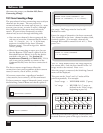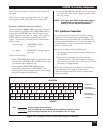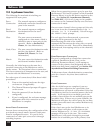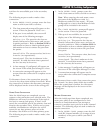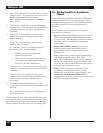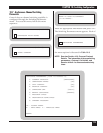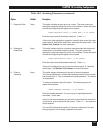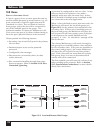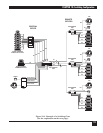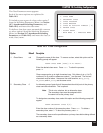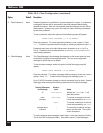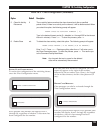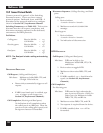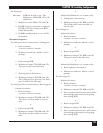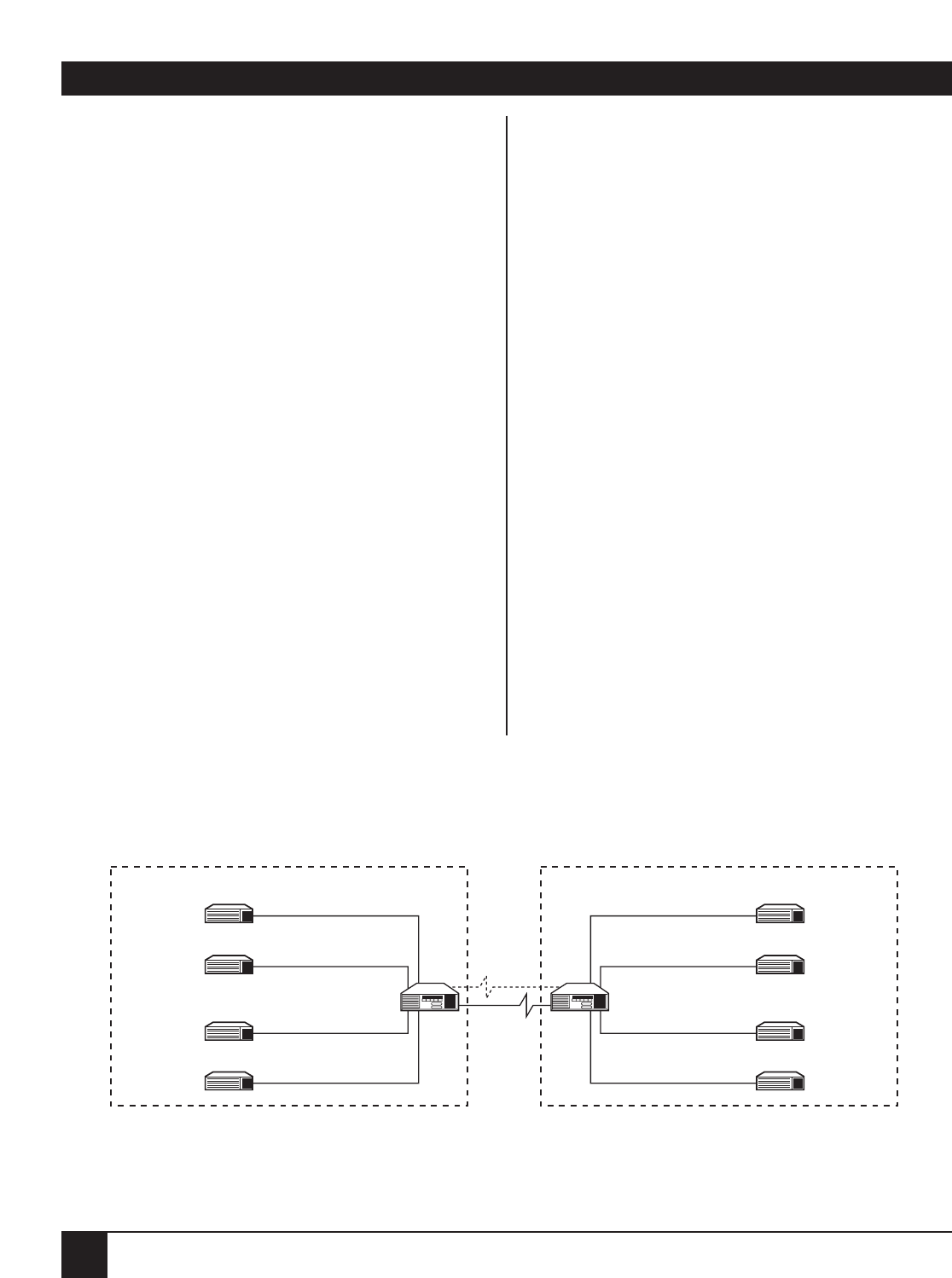
Multiserver 5000
118
10.8 Classes
WHATISASWITCHING CLASS?
A class is a group of one or more ports that may be
used for similar purposes by network users (e.g., all
ports connected to a specific application may be
contained in a class). You can think of classes as
hunt groups, where the user will be connected to
any of the available ports in the group. The
maximum number of classes per Multiserver is 64.
Users can access port(s) by name, without having to
know the port’s physical location in the network.
Classes provide the following features:
• Secondary class is used if all ports in the primary
class are busy.
• Destination-port access can be password-
protected.
• Configurable class messages.
• Disconnection on inactivity timer (no data
activity timeout).
• Port contention handling through first-come,
first-serve queues. Refer to Section 10.10, Port
Contention/Queueing.
A port may be configured in only one class. A class
does not need to be exclusive to any node—
multiple nodes may offer the same class. In fact,
this is desirable if multiple ports in multiple nodes
are connected to the same application.
When a class is defined on more than one node, the
Multiserver will search the local hub group (see
Figure 10-3) for the primary class and then for the
secondary class. If there are no available ports on
the local hub group, the Multiserver will place the
call in queue for any busy primary ports and place
a call request to the remote Multiserver hub
group(s). A CALL IN PROGRESS message will be
sent to the user.
The remote Multiserver(s) will search through its
hub group for an available primary class, and then
for the secondary class. If no ports are available on
the remote hub group(s), the remote Multiserver
will place the call in queue for any busy primary
port. If the class exists on more than one remote
hub group, there is no way to determine which
remote unit will be connected.
The first available port will cause the release of any
other pending queue requests. Refer to Section
10.5, Asynchronous Connections, for more details
about class connections.
MULTISERVER
5000
REMOTE
FEEDER MUX
LOCAL HUB GROUP REMOTE HUB GROUP
REMOTE
FEEDER MUX
REMOTE
FEEDER MUX
REMOTE
FEEDER MUX
LOCAL
FEEDER MUX
LOCAL
FEEDER MUX
LOCAL
FEEDER MUX
LOCAL
FEEDER MUX
MULTISERVER
5000
Figure 10-3. Local and Remote Hub Groups.



